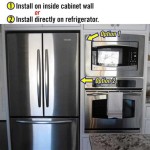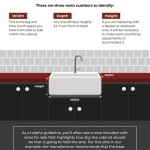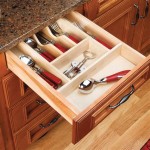How Do I Know What Type of Kitchen Cabinets Have to Match?
Determining the necessary level of cabinet matching in a kitchen remodel or upgrade project requires careful consideration of several factors. Aesthetic preferences, budget constraints, and the existing architectural style of the home all play significant roles. The concept of "matching" cabinets can range from achieving a precise, identical look to creating a cohesive design through complementary styles and finishes. Understanding these nuances is critical for a successful and visually appealing kitchen renovation.
The degree to which new cabinets must match existing ones, or, in the case of a completely new kitchen, match each other, is not a one-size-fits-all decision. A homeowner might desire a seamless integration of cabinets with existing elements, requiring a near-perfect match in style, color, and hardware. Conversely, a conscious design choice might favor contrasting cabinets to create visual interest and define different zones within the kitchen, such as a darker island contrasting with lighter perimeter cabinets. The key is to develop a clear vision for the overall design before making any purchasing decisions.
An important starting point is assessing the current state of the kitchen. If the intention is to replace only a portion of the cabinets, matching the existing ones is often the preferred approach to maintain visual harmony. However, even in this scenario, complete replication can be challenging due to factors like discontinued cabinet lines, aging of existing finishes, and variations in wood grain. Therefore, understanding the limitations and exploring alternative matching strategies is crucial.
Evaluating Existing Cabinetry and Kitchen Style
The first step in determining the extent of matching required is to thoroughly evaluate the existing cabinetry, especially if the project involves replacing only some of the cabinets. This evaluation should encompass several key aspects, including the style, wood species, finish, and hardware. Identifying the precise cabinet style – whether it's shaker, raised panel, flat panel (slab), or something more ornate – is essential. Taking detailed photographs from various angles can be helpful when consulting with cabinet makers or suppliers.
Determining the wood species is equally important. Common kitchen cabinet woods include maple, oak, cherry, birch, and alder. Each wood species possesses unique grain patterns and takes stain differently. If the existing cabinets are stained, identifying the stain color and type (e.g., oil-based, water-based) is critical for achieving a close match. This often requires consulting with a professional who can analyze the finish and provide recommendations for matching products.
The existing kitchen's overall architectural style should also be considered. Is the home traditional, contemporary, modern, or transitional? The cabinet style should complement the overall aesthetic. For instance, modern kitchens often feature sleek, minimalist cabinets with flat panel doors, while traditional kitchens often incorporate more elaborate designs with raised panel doors and decorative moldings. When incorporating new cabinets, they should harmonize with the existing architectural elements to create a unified design.
Furthermore, assess the condition of the existing cabinets. Have they faded or discolored over time? Wear and tear, exposure to sunlight, and cleaning products can alter the original finish. Even if the same stain is used on new cabinets, the final color might differ slightly due to these factors. Understanding the extent of this potential color variation is important when making matching decisions.
Understanding the Different Approaches to Matching Cabinets
There are several distinct approaches to matching kitchen cabinets, each offering varying degrees of similarity and cost. These approaches range from achieving a perfect replication to creating a complementary design through contrasting elements. The choice depends on the homeowner’s desired aesthetic and budget.
Exact Matching:
This approach aims to replicate the existing cabinets as closely as possible. It involves matching the style, wood species, finish, and hardware precisely. This is often the most challenging and expensive option, particularly if the existing cabinets are old or discontinued. It may require custom cabinet making or refinishing existing cabinets to ensure a consistent look. If exact matching is the goal, engaging a skilled cabinet maker experienced in replication is essential.Close Matching:
This approach focuses on achieving a high degree of similarity without necessarily being identical. It involves selecting cabinets with a similar style, wood species, and finish. However, minor variations in grain patterns or hardware might be acceptable. This option is more feasible when the existing cabinets are still in production or when a close substitute can be found. It strikes a balance between achieving a cohesive look and managing costs.Complementary Matching:
This approach moves away from strict replication and embraces contrasting elements while maintaining overall harmony. It involves selecting cabinets that complement the existing ones in terms of style, color, or material. For example, using different shades of the same color family or incorporating a contrasting island can create visual interest without clashing. This approach is suitable for homeowners who want to update their kitchen while still respecting the existing design.Intentional Contrast:
This approach deliberately uses contrasting cabinets to define different zones within the kitchen and create a focal point. It involves selecting cabinets in a completely different style, color, or material. This can be a bold design choice that adds personality and character to the kitchen. However, it requires careful planning to ensure that the contrasting elements complement each other and do not overwhelm the space.When considering these approaches, it's important to remember that "matching" doesn't always mean identical. The goal is to create a cohesive and visually appealing kitchen design that reflects the homeowner's individual style and preferences. The level of matching should be carefully considered based on the specific circumstances of the project and the desired outcome.
Strategies for Achieving a Cohesive Kitchen Design
Regardless of the chosen approach to matching cabinets, there are several strategies that can help achieve a cohesive kitchen design. These strategies focus on creating visual harmony through consistent elements and thoughtful planning.
Consistent Hardware:
Using the same hardware on all cabinets, regardless of style or finish, can create a sense of unity. Selecting a single hardware finish, such as brushed nickel or oil-rubbed bronze, and applying it consistently throughout the kitchen will tie the different cabinet elements together. This is a simple yet effective way to create a cohesive look.Shared Design Elements:
Incorporating shared design elements, such as similar moldings, countertop materials, or backsplash tiles, can also contribute to a cohesive design. For example, using the same granite countertop on both the perimeter cabinets and the island will create a visual connection between the different zones. Similarly, using a similar backsplash tile pattern or color will tie the design together.Color Palette Harmony:
Even when using contrasting cabinets, maintaining a harmonious color palette is crucial. Selecting colors that complement each other and creating a balanced distribution of colors throughout the kitchen will prevent the design from feeling disjointed. Using a color wheel to identify complementary colors can be helpful in making these decisions.Professional Consultation:
Consulting with a kitchen designer or cabinet maker can provide valuable insights and guidance. Professionals have experience in matching cabinets and creating cohesive kitchen designs. They can assess the existing kitchen, provide recommendations for matching cabinets, and help select the right finishes and hardware. Their expertise can save time and money and ensure a successful outcome.Sample Testing:
Before making any purchasing decisions, it's important to test samples of cabinet finishes and hardware in the actual kitchen environment. Colors can appear different under different lighting conditions. Testing samples will allow homeowners to see how the finishes and hardware look in their specific kitchen and make informed decisions.Achieving a cohesive kitchen design is a process that requires careful planning and attention to detail. By considering the existing kitchen style, understanding the different approaches to matching cabinets, and following these strategies, homeowners can create a beautiful and functional kitchen that reflects their individual style and preferences.
Ultimately, the decision of how closely kitchen cabinets must match is a subjective one that depends on individual preferences and the specific goals of the renovation project. By carefully considering the factors outlined above and seeking professional guidance when needed, homeowners can confidently navigate the process and create a kitchen that meets their aesthetic and functional needs.

Mix Match Cabinets A How To Guide The Cabinet Doctors

Do All My Kitchen Cabinets Need To Match

Mixing And Matching Cabinet Styles For Your New Kitchen Parr Design Center

The Case For Matching Hinges To Cabinet Color Bean In Love

How To Match Existing Kitchen Cabinets Magic

Mismatched Kitchen Cabinets Ideas For Creative Spaces

Kitchen Confidential 7 Ways To Mix And Match Cabinet Colors

Should My Kitchen And Dining Room Match Colour Trends

Kitchen Cabinet Parts Terminology Granite Quartz Countertops Cabinets Factory

13 Types Of Kitchen Cabinets Must Know Guide
Related Posts








